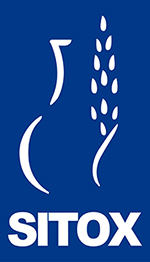Eating vegetables is not always a good advice. A case report and literature review of acquired methemoglobinemia
Accepted: 12 January 2024
All claims expressed in this article are solely those of the authors and do not necessarily represent those of their affiliated organizations, or those of the publisher, the editors and the reviewers. Any product that may be evaluated in this article or claim that may be made by its manufacturer is not guaranteed or endorsed by the publisher.
Authors
Methemoglobinemia (MET) is a life-threatening condition resulting from the development of methemoglobin (MetHb), which binds oxygen irreversibly, causing refractory hypoxia and so-called “functional anemia”. MET can be caused by hereditary or acquired processes. Acquired forms are the most common. Symptoms correlate with the MetHb level and range from cyanosis and dyspnea to dysrhythmias, metabolic acidosis, coma, and cardiac arrest. MetHb levels above 70% are fatal. Methylene blue (MB) is the specific antidote. In all cases, supportive treatment, including intravenous hydration, glucose correction, and oxygen supplementation, must be started immediately. Exchange transfusion has been used successfully to treat MET and may be appropriate in patients for whom MB is ineffective. We report the case of a 54-year-old woman who presented to our emergency department for the acute and sudden development of chest pain, shortness of breath, and severe cyanosis after drinking a significant amount of boiled courgette water. Arterial blood gas analysis revealed a MetHb level of 26%. She was treated immediately with MB, oxygen supplementation, and hydration with normalization of her MetHb in 12 hours. Our recommendation is to always investigate MET in patients with unexplained cyanosis and refractory hypoxia.
How to Cite

This work is licensed under a Creative Commons Attribution-NonCommercial 4.0 International License.
PAGEPress has chosen to apply the Creative Commons Attribution NonCommercial 4.0 International License (CC BY-NC 4.0) to all manuscripts to be published.

 https://doi.org/10.4081/ecj.2024.12034
https://doi.org/10.4081/ecj.2024.12034








